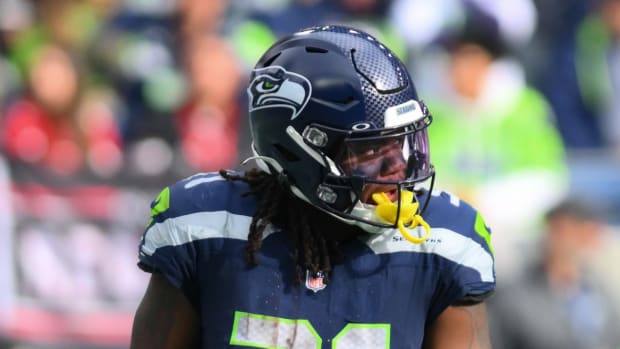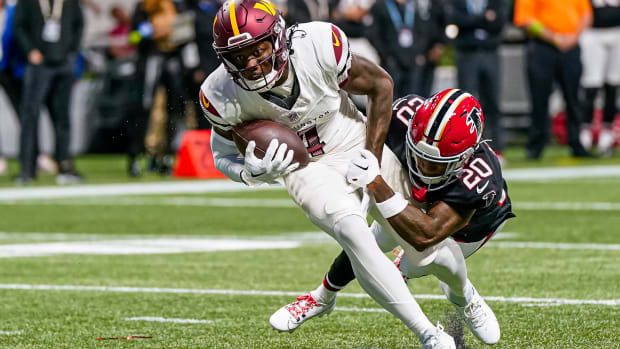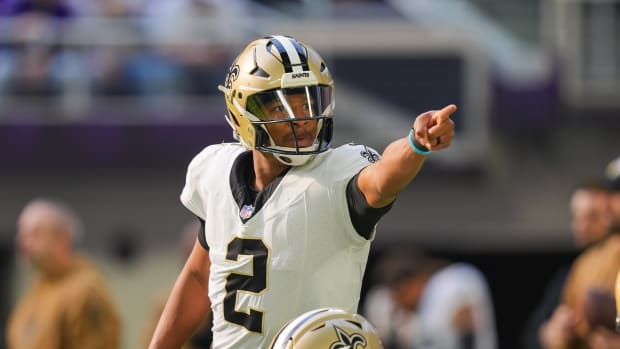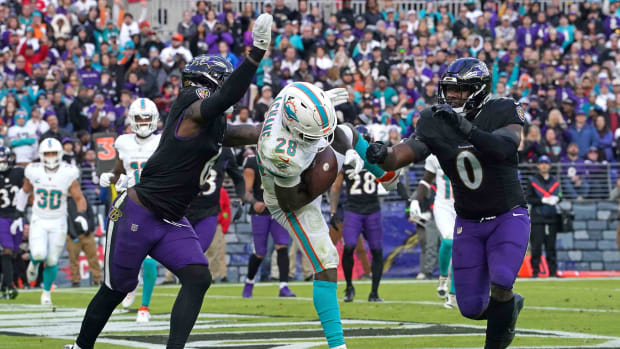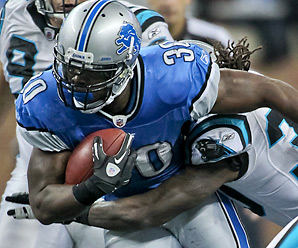
Kevin Smith's presence lets Lions open up their playbook again
Kevin Smith was a revelation for a Lions team looking for a spark from its running backs. (MSA/Icon SMI)
A funny thing happened to the Lions as they were on their way to win No. 7 Sunday: They rediscovered their run game, with help from an old friend.
Kevin Smith, Detroit's third-round draft pick back in 2008, put up 140 yards on the ground and 201 yards total, plus three touchdowns, in the Lions' 49-35 win over Carolina. With Jahvid Best still sidelined by a concussion, the running back job now looks like Smith's to lose.
And if he can keep playing like he did in Week 11, Smith might be the key to Detroit rediscovering its early-season form.
The Lions are just 2-2 since Best left the lineup following a Week 6 loss to San Francisco. In Best's absence, Detroit has tried to balance out its offense with the likes of Maurice Morris, Keiland Williams and even Stefan Logan. All things considered, the results weren't half bad -- the Lions rushed for 104 yards against Atlanta, then 113 in a win over Denver, before struggling to just 80 in a loss to Chicago.
Missing the whole time, though, was Best's home-run potential. The second-year man out of Cal hasn't put up elite numbers in his first season and a half in the league, but when he gets into the open field, he's as good as just about any running back in the league.
Chicago found that out first-hand in Week 5, when Best broke loose for an 88-yard TD run. That's by far his longest rush of the year, but Best also has receptions of 60, 35, 32 and 24 yards, a testament to his dual-threat abilities.
Jim Schwartz's team is never going to ground and pound the opposition to death (and yes, I'll put a dollar in the jar for using the phrase "ground and pound") -- the Lions' offense isn't built like that. When it's operating at its highest frequency, Detroit's attack features Matthew Stafford in the shotgun with Calvin Johnson, Nate Burleson, Titus Young, Tony Scheffler, Brandon Pettigrew and a running back all involved in the passing attack over the course of a game.
Johnson alone usually commands two defenders' worth of attention, and Detroit's dynamic tight ends can keep linebackers busy. That, ideally, should open up some space underneath for the running backs.
Case in point, Smith's touchdown reception in the first half against Carolina:
On that play, the Lions had Johnson and Young out wide on opposite sides of the field, Pettigrew in at tight end, then faked a reverse to Logan. By the time the Panthers had accounted for every other option for Stafford, Smith had slipped out into the flat with a convoy of blockers.
The running backs haven't hit on a big play like this since Best left the lineup. In the three games prior to Sunday, Detroit's backs had seven catches for a total of 41 yards -- an average of just 5.85 yards per reception. Smith was a part of those struggles, gaining 10 yards on two grabs in Chicago.
But that was before the Lions committed to making him part of their full attack, as they did Sunday.
The Smith on display Sunday was the one the Lions thought they had as a rookie in 2008. Smith put up more than 1,200 total yards on that horrific 0-16 2008 Detroit team. But injuries started sidelining him in 2009, the Lions drafted Best in '10 and sent Smith packing prior to this year.
Now that he's healthy, Smith looks like a terrific fit again in Detroit.
With Detroit really unable to just line up in an I-formation and hammer defenses, offensive coordinator Scott Linehan tends to use dump-off passes and screens almost as extensions of the run game. Instead of calling a traditional run play, Linehan will run delayed short routes with his backs -- utilizing either a screen like the one above or some sort of safety-valve option, where whichever back is in darts out into the flat or curls around the line down the middle.
When Best is in the lineup, defenses have to pay a ton of attention to those plays, because of what Best can do after the catch. There's a much bigger grace period for defenses when Morris or Williams is in the backfield.



































